Quick fix! 24 ways to improve your health and fitness this year
Small changes can make a big difference to your wellbeing and fitness – without breaking a sweat (much). Here are simple steps to a new you.
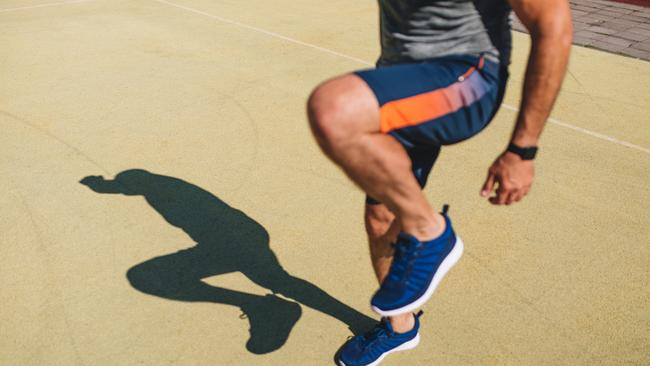
Want to improve your health and fitness in 2025? The good news is you don’t need a drastic lifestyle overhaul to make a difference. Small but impactful changes can significantly improve your wellbeing. Here are 24 steps to help you get in better shape for the year ahead.
1. Hop for two minutes a day to boost balance and knee strength
Two minutes of daily hopping can strengthen hip bones in older men and women, reducing the risk of fracture after a fall, according to exercise scientists at Loughborough University. Incorporating some backward hopping is even better for us, says Yu Song, an assistant professor of health, sport and exercise sciences at the University of Kansas. In a recent study, Song showed that the knee and its supporting muscles work up to twice as hard during backward hopping compared with going forwards. “People may not think of knee function or hopping backward as a natural part of movement,” Song says, adding that “it can significantly and accurately tell us about knee strength” and help to improve it.
2. Do more puzzles — they can improve your fitness as well as your brain

Challenging your brain before exercising could improve attention span and cognitive function, according to researchers at the universities of Birmingham and Extremadura in Spain. This technique, known as “brain endurance training” (BET), was originally developed to boost mental and physical stamina in athletes. However, new research published in Psychology of Sport and Exercise suggests it also has implications for healthy ageing.
In an eight-week study, adults aged 60 and older participated in weekly 45-minute workout sessions – 20 minutes of resistance training and 25 minutes of endurance exercise. One group completed a 20-minute BET cognitive challenge, such as solving sudoku, crosswords or quizzes beforehand. Participants were tested on reaction times, cognitive skills and physical ability (using chair-stands and arm-curl tests) before and after the study.
At the end of the trial, the BET group outperformed all others with a 7.8 per cent improvement in cognitive assessments (compared with 4.5 per cent in the exercise-only group) and a 29.9 per cent hike in physical performance (22.4 per cent in the non-BET group).
Researchers found that repeatedly engaging in mentally fatiguing cognitive tasks helped participants to build resilience and improve endurance performance. “BET is an effective countermeasure against mental fatigue and its detrimental effects in older adults,” says Chris Ring, professor of sport, exercise and rehabilitation sciences at the University of Birmingham.
3. Eat more pistachios for healthier eyes
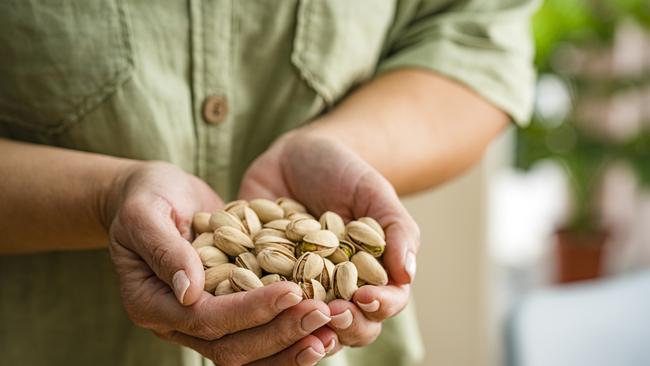
Consuming about 60 grams of pistachios daily may significantly improve eye health, according to a study by nutrition scientists at Tufts University. Pistachios are rich in lutein, an antioxidant plant pigment essential for protecting the eyes from light damage and age-related degeneration.
In the study, healthy middle-aged participants who ate 60g of the nuts every day for three months displayed an increase in macular pigment optical density (MPOD) – a measure of pigment density in the macula, located at the back of the eye. A higher MPOD is associated with healthy vision and linked to a reduced risk of age-related macular degeneration, which is a leading cause of blindness in older adults.
4. Eat more pomegranate for your brain
There are plenty of reasons to eat more pomegranate in 2025. The fruit provides fibre and has antioxidant levels three times higher than green tea. Pomegranates also contain a substance called urolithin A, a compound shown to improve brain function and memory in people with age-related cognitive decline and dementia, according to researchers at the University of Copenhagen. Additionally, they are rich in the polyphenol punicalagin, a potent natural antioxidant that was shown to prevent brain ageing in a Spanish study published last year. Add to salads or scoop out the seeds to serve on yoghurt.
5. Brush your teeth in the middle of the day — before lunch

While twice a day is the standard rule for tooth-brushing frequency, the UK’s Oral Health Foundation recently reported that one in four of us only brushes once a day, and 56 per cent of adults skip brushing their teeth once a week. According to health chiefs in the UK’s Adult Oral Health Survey, brushing twice daily is a minimum requirement, but adding a midday tooth-brushing session – particularly before lunch – can be beneficial for those who don’t brush for the recommended two minutes.
Using interdental brushes or floss at other times is encouraged. Bacteria left in the mouth through suboptimal oral hygiene can enter the bloodstream, travelling through blood vessels throughout the body, including the cardiovascular system where it may cause inflammation and damage.
A study published in the BMC Oral Health last year found that people who brushed their teeth once a day or less were more likely to develop chronic health conditions like heart disease or type 2 diabetes, compared with those with more diligent oral-care routines. “Failing to brush your teeth often and well enough leaves the mouth susceptible to bacterial overgrowth,” says Dr Nigel Carter, the CEO of the Oral Health Foundation. “This increases the risk of tooth decay and gum disease, as well as raising the risk of other health problems.”
6. Make more phone calls to friends for a mental health boost

If you always put off phoning friends because you are too busy, then consider making quick calls a habit in 2025. According to the motivational TED speaker Simon Sinek an eight-minute catch-up call is the optimum duration for maintaining bonds and allowing both parties to “engage in a meaningful exchange”.
When the eight minutes are up, simply arrange the next catch-up and sign off promptly. The payoff could be huge. A study of 240 adults in JAMA Psychiatry found that participants who received regular brief phone calls experienced a “rapid reduction” in depression and anxiety compared with those who didn’t make or receive such calls.
7. If you’re a gym bunny, give yourself an easy week every two months
If you are diligent with your workouts, it’s worth incorporating a de-load week every six to eight weeks – or whenever you feel you need it – to reset both physically and mentally. Doing so helps to reduce the risk of overtraining and leaves you feeling refreshed and rejuvenated.

Described by researchers in Frontiers in Sport and Active Living as a “purposeful reduction in training demand”, a de-load week doesn’t mean taking a complete break and putting your feet up. Instead, it involves reducing the number of usual workouts by half or reducing the intensity of your usual exercises by about 20 per cent for a period of seven days.
8. To get strong and lean focus on lowering weights, not just lifting them

Constantinos Yiallouros, head trainer for Anytime Fitness UK, says the “eccentric phase” – the lowering part of any weights exercise – is often overlooked, but should be a key focus if you really want to get strong and lean this year. “Slowing down the lowering phase increases time under tension, leading to better muscle activation and recruitment,” Yiallouros says. “Instead of rushing through the lowering portion of an exercise, deliberately control the movement as you lower.” For optimal results he suggests counting one second to lift, pausing for one second at the top, and taking two to three seconds to lower a weight for maximum gains.
9. Make good-quality cider your drink of choice for an antioxidant boost
We think of red wine as nutritionally superior to other alcoholic drinks because it contains relatively high amounts of the antioxidant plant compound resveratrol, but its nutritional profile is rivalled by cider.
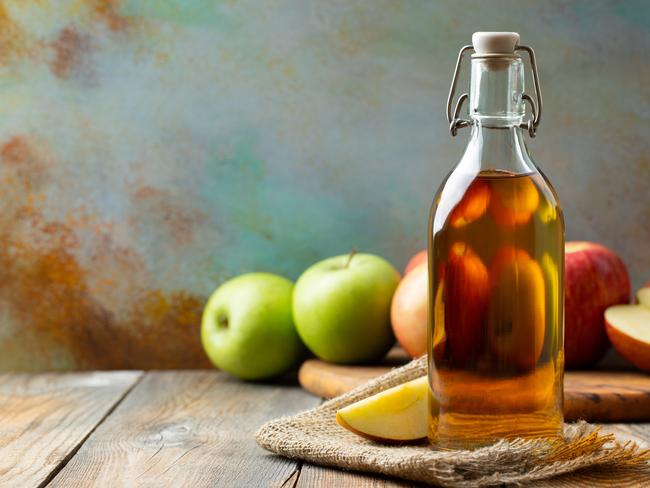
The apples from which cider is made contain an abundance of antioxidants including quercetin in the peel and hydroxycinnamic acids in the flesh of the fruit. A study in Food Bioscience suggests that artisan ciders contain comparable levels of antioxidant compounds such as polyphenols – natural substances shown to stabilise blood sugar levels and boost heart, gut and brain health – to those found in red wine. Remarkably, cider even contains more antioxidants than fresh orange juice.
10. But make it gin or vodka for weight loss
Gin and tonic or vodka, lime and soda are relatively low in calories and carbs, making them gentler on the waistline compared with many other drinks, according to the registered nutritionist Dominique Ludwig. A 25ml shot of 40 per cent ABV vodka contains 55 calories, while the same size serving of gin provides 35 calories. Add regular tonic water or soda and it’s an extra 90 calories per serving, but still significantly less than the 340 calories in a typical pint of beer or the 226 calories in a large glass of red wine. “Opt for single shots and top up with low-calorie soda water if you want to drink but are trying to lose weight,” Ludwig suggests.
11. Get some properly fitted running shoes
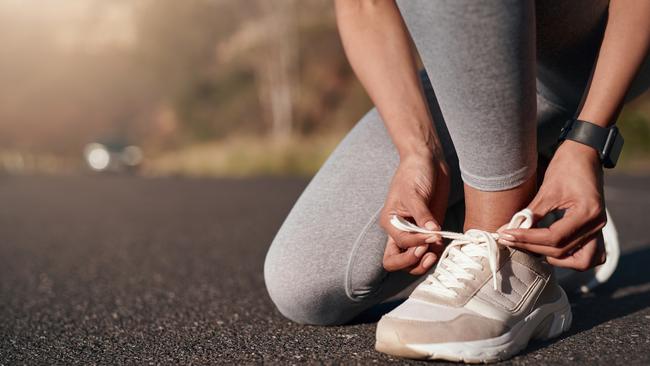
Wearing the right running shoes can significantly reduce the risk of injury, and a simple “wet footprint test” can help you find the perfect fit, says Ben Mounsey, the running expert and coach at SportShoes.com. To perform the test, dip the sole of your foot into water, shake off any excess and then step onto a brown envelope – the darker the paper, the more clearly you can see the shape of the wet footprint – ensuring you press down evenly.
“The footprint left on the paper will reveal the shape of your foot arch,” Mounsey says. “Understanding your pronation – the way your foot rolls inwards or outwards – is crucial. It’s like a roadmap for your feet.”
If the footprint shows the entire sole of your foot with little curve on the inside, you likely have flat feet or overpronation and might need a shoe with motion control or stability features. Conversely, if there’s a large gap between the ball and heel, you are likely an under-pronator and might need a more cushioned shoe that won’t hinder the natural pronation of your foot.
Most runners are mild to moderate overpronators, which will produce a wet footprint with a noticeable curve along the inside while still connecting the ball and heel. For these runners, supportive running shoes, maybe with additional support on the inside, are probably the best choice, Mounsey says.
12. Add a squeeze of lemon juice to hummus to boost iron absorption
Pairing iron-rich foods with those high in vitamin C enhances the absorption of plant-based iron sources, a practice recommended by the UK Scientific Advisory Committee on Nutrition.
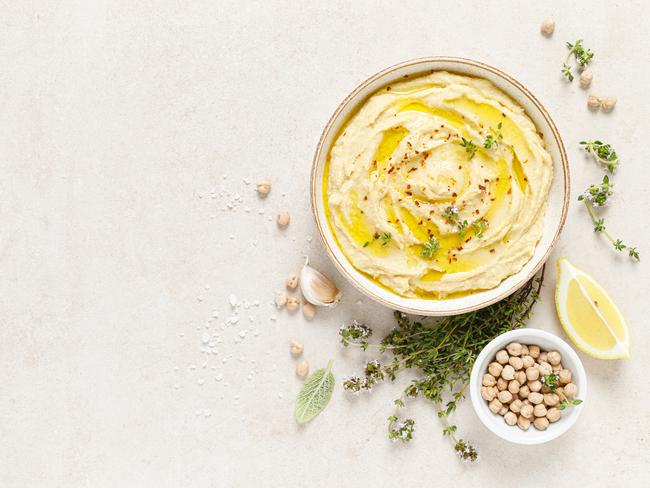
Quinoa, chickpeas, lentils, soybeans, sesame and pumpkin seeds, sun-dried tomatoes, dark chocolate and black beans are all excellent plant sources of iron. “A great example is adding lemon juice, which is rich in vitamin C, to hummus,” says Alex Ruani, a researcher in nutrition science at University College London and the chief science educator at the Health Sciences Academy. “Research published in the journal Foods showed this could triple the absorption of plant iron from the chickpeas in hummus, compared to chickpeas prepared without lemon juice.”
13. Choose frozen green beans, sweetcorn, spinach and blueberries over fresh
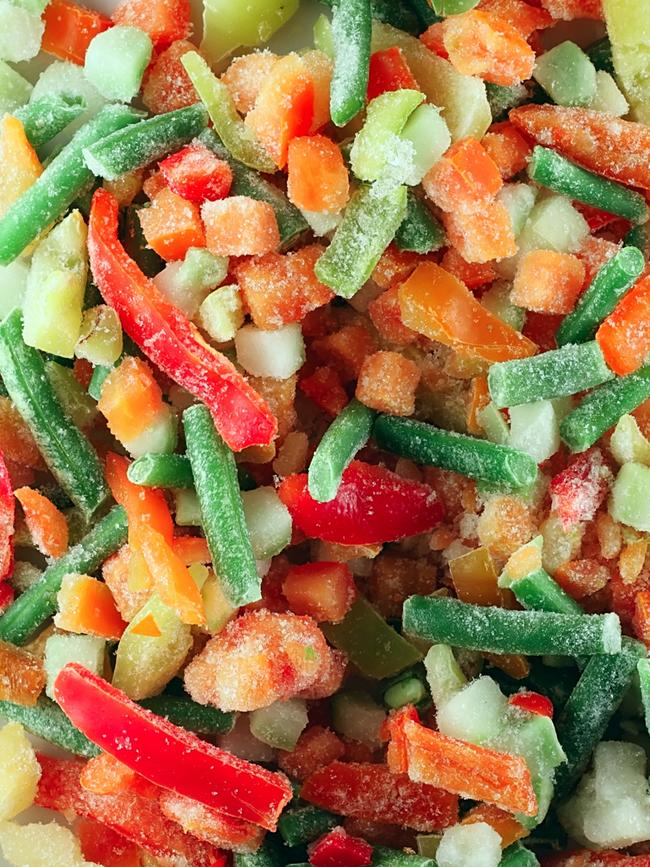
You might assume that fresh fruit and veg are nutritionally superior to frozen, but this isn’t always the case – especially if produce lingers in the fridge for several days. One study by British researchers showed that fresh spinach loses all of its vitamin C within four days at room temperature, while freezing it helps to lock in nutrients for a few months.
“Other studies have shown that vitamin C levels in strawberries, carrots, spinach, peas and broccoli are similar in freshly harvested and frozen samples,” Ruani says. “In foods such as sweetcorn, green beans and blueberries, the frozen samples actually had higher vitamin C levels than their fresh counterparts, probably because freezing stops enzymes and slows down processes like oxidation that normally break down vitamin C in fresh produce.”
14. Eat your last meal two to three hours before bed
Eating late at night has often been linked to increased body fat and impaired weight loss. Researchers at Harvard Medical School suggest that evening eating affects levels of the appetite-regulating hormones leptin and ghrelin, which influence our hunger and satiety signals. In the longer term this can increase the risk of metabolic conditions including type 2 diabetes, according to a study by the Barcelona Institute for Global Health.
The study’s authors advise eating a last meal before 7pm but if that isn’t practical, aim to consume your last calories two to three hours before bedtime. “Allowing a gap for digestion of food is helpful before bedtime,” says Rhiannon Lambert, a registered nutritionist and the author of The Science of Nutrition. “And there’s research showing it helps with weight and disease control and prevention.”
15. Take ten deep, controlled breaths before eating

Neuroscientists at the Salk Institute reported in Nature Neuroscience that taking controlled deep breaths activates a brain circuit that regulates behaviours and emotional state. Dr Linia Patel, a researcher in the department of clinical sciences and community health at the Universita degli Studi di Milano in Italy and a spokesperson for the British Dietetic Association, says deep breathing before meals can help to prevent overeating and aids better digestion. “A simple trick I use myself is ten slow breaths before every meal,” Patel says. “It activates the parasympathetic nervous system to improve digestion and reduce bloating, as well as helping with more mindful eating.”
16. Turn the heating a few degrees down at night
Cooling the temperature in your bedroom by turning down the heating or opening a window could help you drop off more easily. “The optimal bedroom temperature for restful sleep is 16-18C,” says the sleep expert Martin Seeley.
“Sleeping in a room that’s too hot forces your body to work harder to regulate its temperature so that you struggle to get to sleep.”

You could also burn more calories as you sleep by going cooler. A study in the journal Diabetes tracked a group of men who slept in temperature-controlled bedrooms, initially heated at 24C and reduced over four weeks to a cool – but not shivery – 19C. Researchers analysed the response of the men’s stores of brown fat – a special type of fat deposited mostly around the neck and upper back that helps to burn calories and prevent weight gain. Brown fat activity peaked at 19C, just above the level for optimum sleep, when the men were shown to be burning as many calories per hour as they would on a gentle bike ride. “Just by sleeping in a cold room they gained metabolic advantages,” the researchers wrote.
17. Moisturise your heels every evening
Cracked skin on the heels is neither attractive nor healthy. “When skin on the heels is starved of moisture it can become dry and sore,” says Emma McConnachie, consultant podiatrist for the Royal College of Podiatry. “In some cases fissures or splits appear due to the lack and these can become infected.” Slathering an urea-based moisturising cream on your heels every evening helps to bind moisture onto the outer layers of the skin and is the best step towards prevention of cracked heels. Try Eucerin Aquaphor Soothing Skin Balm (boots.com) or Superdrug’s Cracked Heel Repair Cream (superdrug.com). “Avoid applying the cream to the area in between your toes, which can be moist anyway,” McConnachie says.
18. Have a fruit bowl on your desk
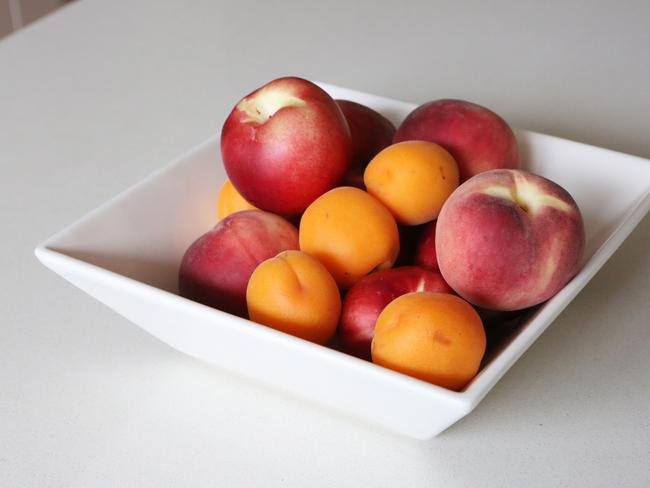
Struggling to get your five a day? Nutritionists at the Technical University of Denmark found that office workers who placed fresh fruit within easy reach – either on their desk or within arm’s length – were able to significantly increase their weekly fruit intake.
19. Have half a tablespoon of olive oil a day
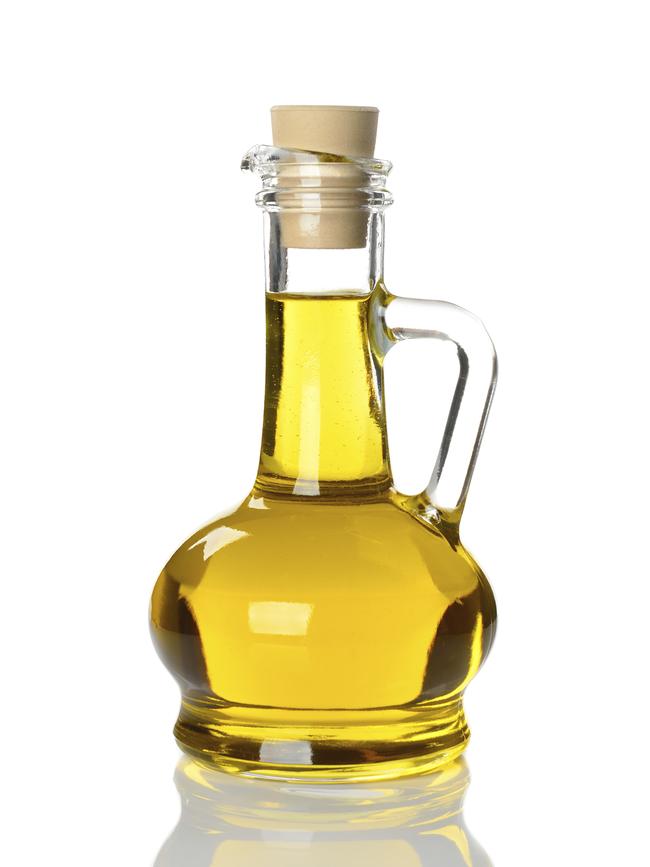
It may be expensive but olive oil offers a wealth of health benefits – it is packed with skin and bone-friendly vitamins E and K, polyphenol compounds and antioxidants that may reduce your risk of disease. It’s primarily composed of monounsaturated fatty acids including oleic acid, a potent anti-inflammatory agent that has been shown to help reduce cholesterol levels, according to Harvard scientists in the Journal of the American College of Cardiology.
The Harvard team found that consuming about half a tablespoon (7g) or more of olive oil daily was associated with a 29 per cent reduced risk of early death from neurodegenerative disorders such as Alzheimer’s disease and Parkinson’s disease, a 19 per cent lower risk of early death from cardiovascular disease and a reduced risk of dying early from cancer.
Dr Sarah Brewer, a former GP and expert in nutritional medicine, says: “Olive oil can improve your joints, skin and hair and even help to manage your weight.”
No wonder the likes of Kourtney Kardashian, Beyonce, Gwyneth Paltrow and Jennifer Lopez are reportedly glugging it daily. Brewer says she takes a shot of olive oil every morning but that you can also add it to salads, use it as a dip for bread or drizzle it over pasta. “Heat breaks down the potent nutrients in extra virgin olive oil, so I recommend taking it neat or using it as a finishing oil for maximum health benefits,” Brewer advises.
20. Eat more prunes and dried apricots
Dried fruits have long had a bad reputation due to their concentrated sugar content, but they are also packed with fibre and valuable nutrients, including potassium for healthy nerves and bone-friendly vitamin K.
A study involving 421,764 participants recently found that eating seven to nine portions of dried fruit a week – equivalent to one prune or apricot, or ten raisins – can lower the risk of type 2 diabetes by up to 60.8 per cent.
Reporting in BMC Nutrition and Metabolism, the researchers found the fibre and plant polyphenols in dried fruit helped to control blood sugar levels and improve digestive health.
21. Switch red meat for beans and peas two to three times a week
Swapping red meat and dairy for unprocessed plant-based foods such as peas and beans could reduce early death from diet-related diseases by a tenth, according to researchers at UCL and the University of Oxford. The study in PNAS also found that peas and beans outperformed processed plant products – such as veggie burgers and plant milks – in terms of nutrients and fibre.
“We should be aiming to eat beans, peas and other pulses two to three times a week in place of animal produce,” Patel says. “My own research in the European Journal of Clinical Nutrition showed eating just one 40g portion of dried pulses (about three tablespoons when cooked) per week decreases the risk of colon cancer by 21 per cent compared to people who ate none.”
22. Add a teaspoon of honey or two squares of dark chocolate to Greek yoghurt
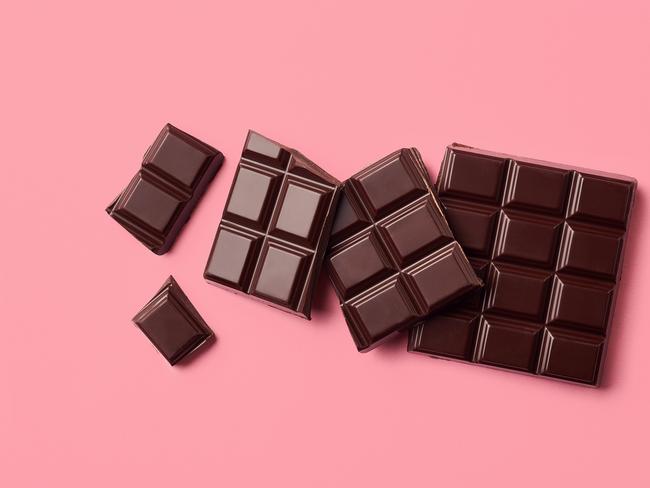
Greek yoghurt contains gut-friendly probiotic strains such as Bifidobacterium animalis as well as other good bacteria. Adding honey or grated 70 per cent dark chocolate to Greek yoghurt provides more than just a hit of sweetness. “The probiotics in yoghurt pair beautifully with chocolate’s prebiotics to provide a huge dose of gut-friendly bacteria,” Patel says. “And a recent study in The Journal of Nutrition showed that adding honey supports the survival of the yoghurt’s probiotic bacteria in the gut.”
23. Do strength before cardio at the gym
It pays to do your resistance training before hitting the treadmill or cross trainer at the gym. Exercise scientists at the College of New Jersey discovered that participants who ran on a treadmill before weight training experienced a reduction in muscle power, leading to fewer reps during their strength exercises. Similar findings were reported by a team from the University of Sao Paulo who found exercisers performed less well at strength work if they had been on the exercise bike first.
24. Add hills to your walks, runs and cycles
Even a gentle incline will increase physical effort - and the calories burnt- during a run, walk or cycle compared with the same distance on flat ground. “Hills subtly change the demand on your body because you have to overcome gravity to get up them,” says Sam Murphy, the author of Run Your Best Marathon. “This increases the load on your cardiovascular system and engages more muscles, particularly in your legs, helping you build strength and improve your overall fitness.” Add hilly routes to your workouts, or climb one hill for 40 seconds, then return to the bottom and repeat 6-8 times, a couple of days a week.
The Times




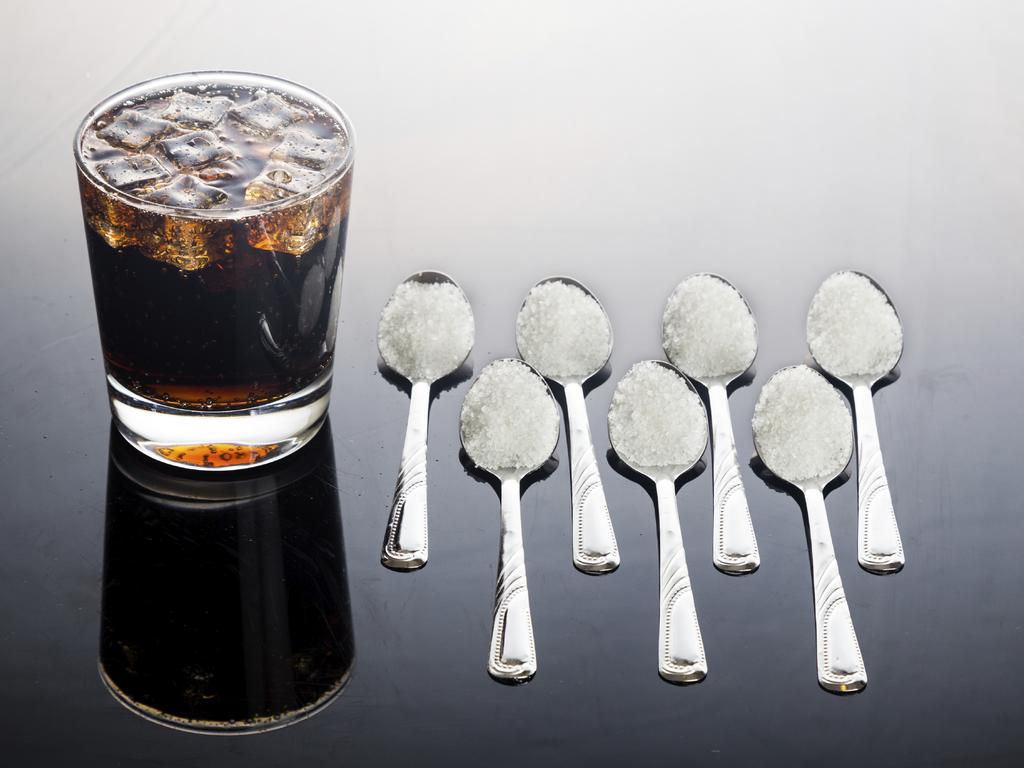
To join the conversation, please log in. Don't have an account? Register
Join the conversation, you are commenting as Logout